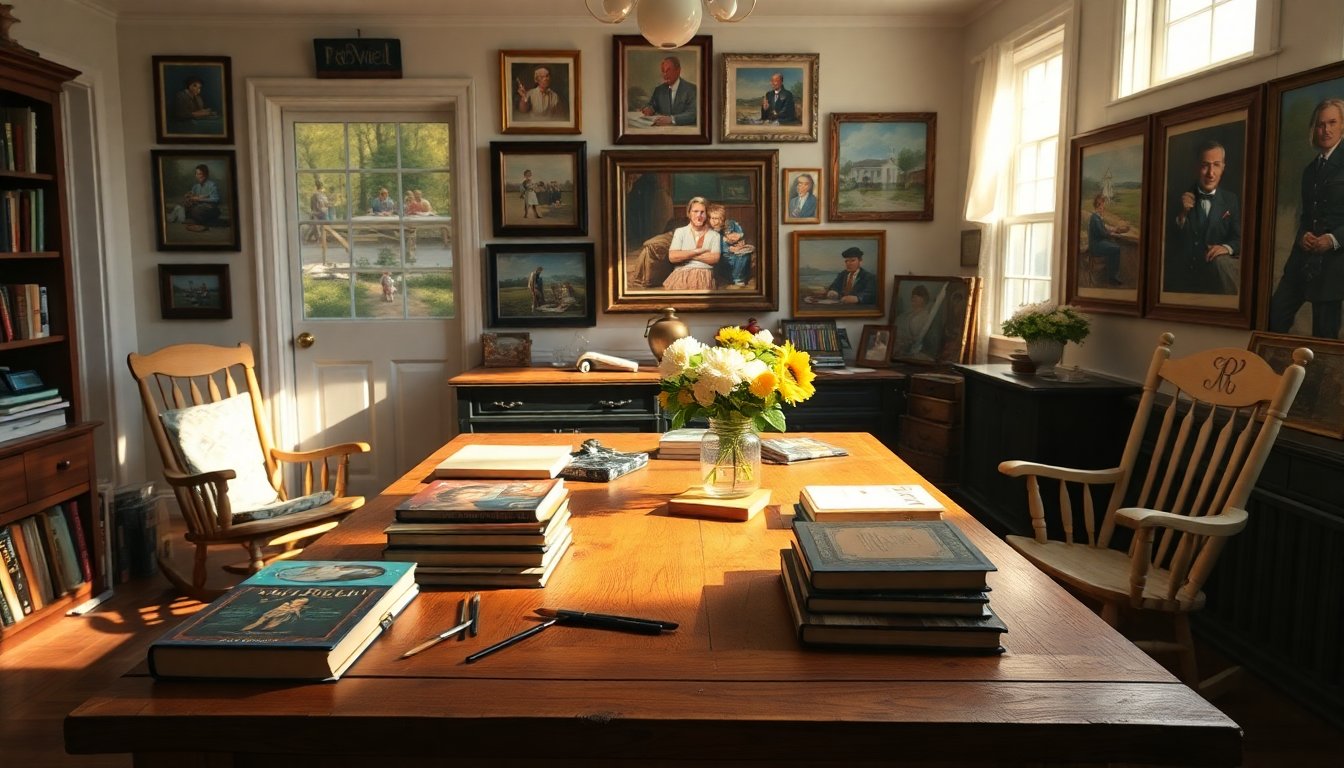Table of Contents
In a notable development, the family of renowned American painter Norman Rockwell is in a public dispute with the Department of Homeland Security (DHS). This disagreement revolves around the interpretation and use of Rockwell’s artwork by the government, indicating a significant divergence from the artist’s original intentions.
Rockwell, celebrated for his vivid portrayals of American life, has left a legacy that resonates deeply within the cultural landscape of the United States. His family asserts that the DHS’s interpretation misaligns with Rockwell’s beliefs, raising concerns over the appropriateness of using his images in this context.
Background on Norman Rockwell’s art
Norman Rockwell (1894-1978) was a prolific American illustrator whose works captured the essence of everyday life. His illustrations for The Saturday Evening Post became iconic, showcasing themes ranging from familial love to societal challenges.
Notable works include the Four Freedoms series, inspired by President Franklin D. Roosevelt’s vision for universal rights, and poignant pieces addressing racial inequality.
Despite his widespread acclaim, Rockwell’s art faced criticism during his lifetime. While many regarded him as a master of capturing the American spirit, some critics dismissed his work as overly sentimental or lacking depth.
This dichotomy illustrates the challenges of defining Rockwell’s place within the broader art world, where the distinctions between illustrator and artist often fueled debate.
The DHS controversy
The current conflict arose when the DHS began using Rockwell’s art to symbolize themes of patriotism and American values.
However, Rockwell’s descendants argue that these interpretations deviate from the core messages of his work, which often offered a more nuanced view of society. They contend that the government’s utilization of his paintings undermines his legacy by stripping away the essential context of the issues he addressed.
This clash raises significant questions about the appropriateness of employing Rockwell’s art for governmental messaging and how an artist’s work can evolve in meaning over time. The Rockwell family advocates for a broader understanding of their ancestor’s contributions to art, emphasizing that his pieces were created in a spirit of compassion and understanding rather than blind nationalism.
Norman Rockwell’s impact on American culture
Throughout his career, Rockwell produced over 4,000 original works, many of which are now housed in public collections. His art is celebrated for its reflection of the complexities of American life, often portraying the struggles and triumphs of ordinary people. The Four Freedoms paintings, in particular, stand as powerful commentaries on the values that Rockwell deemed essential to the nation.
Furthermore, Rockwell’s long-standing relationship with the Boy Scouts of America solidified his role in shaping American youth culture. His illustrations for the organization underscored values like community service and moral integrity, reinforcing his image as a champion of American ideals.
Reassessing Rockwell’s legacy
As the debate unfolds, it prompts a broader conversation about how artistic legacies are interpreted and honored. Can the meaning of an artwork shift as societal values change? The Rockwell family’s challenge to the DHS’s portrayal underscores the necessity for a nuanced understanding of an artist’s context and intentions.
This dispute serves as a reminder that art is not static; it evolves and is reshaped by the cultures that engage with it. The Rockwell family’s efforts to reclaim their ancestor’s narrative highlight the importance of preserving the integrity of artistic expression.





